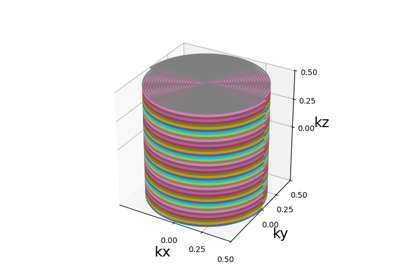read_pulseq_traj#
- mrinufft.io.pulseq.read_pulseq_traj(seq, trajectory_delay=0.0, gradient_offset=0.0) tuple[ndarray[tuple[int, ...], dtype[_ScalarType_co]], dict, Acquisition][source]#
Extract k-space trajectory from a Pulseq sequence file.
The sequence should be a valid Pulseq .seq file, with arbitrary gradient waveforms, which all have the same length.
- Parameters:
sequence (pulseq Sequence, or Path to the Pulseq .seq file.) – The Pulseq sequence object or the path to the .seq file.
trajectory_delay (float, optional) – Compensation factor in seconds (s) to align ADC and gradients.
gradient_offset (float, optional) – Simulates background gradients (specified in Hz/m)
- Returns:
NDArray – The k-space trajectory as a numpy array of shape (n_shots, n_samples, 3), where the last dimension corresponds to the x, y, and z coordinates in k-space.
dict – the [DESCRIPTION] block from the sequence file.
Acquisition – The acquisition parameters extracted from the sequence.
- Return type:
tuple[ndarray[tuple[int, …], dtype[_ScalarType_co]], dict, Acquisition]

